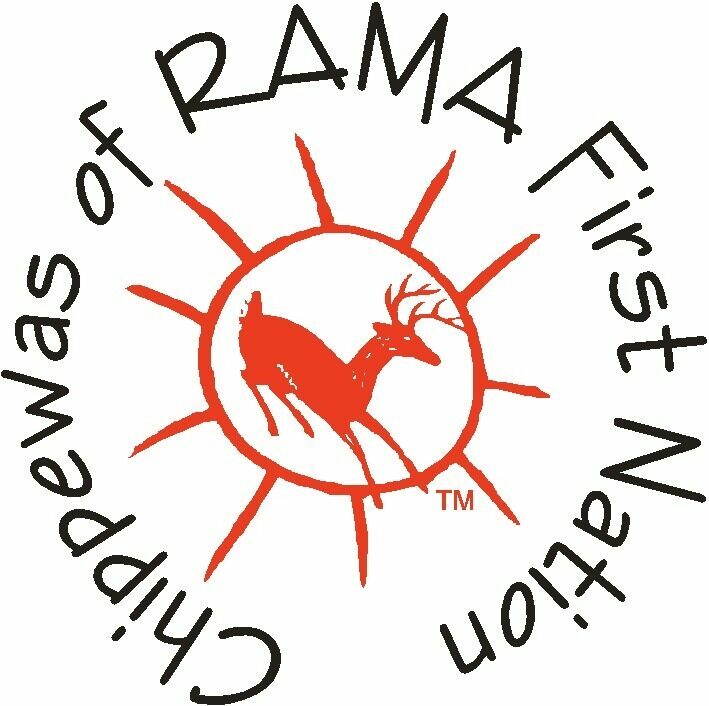Chief Island Members Information
Chief Island Articles Members area : click here
Chief Island
Aaniin/Hello,
We know there has been a lot of messaging regarding the installation of the buoys at Chief Island. We appreciate the many positive messages of support from our neighbours. We also understand there is an equal amount of concern/outrage expressed regarding limiting the visitors to the bay of Chief Island.
The buoys are here to stay. Rama has created a safe place for our members to swim and enjoy our property. We are requesting the general public respect our lands the same way the lakefront property of private homeowners is respected. There are many local publically accessible spaces to moor, anchor and enjoy the water that do not include our sacred and private lands. In addition, many cities, townships and municipalities are putting new measures and protocols in place to restrict access and movement across the region during the global pandemic.
We know that change is difficult. We wish everyone a safe summer.
Chief and Council
Bylaw and Permits
2022 Chief Island Bylaw Pamphlet
Rama First Nation Bylaw Chief Island Protection
Chief Island Permitting Regulation
September 3, 2021, Permit Area Regulation
2022 mooring permit schedule A
Completed applications should be submitted to the Rama First Nation Lands Department [email protected].
If your application has been accepted and there are permits available, the Lands Department will instruct you to make payment (in person) at the Chippewas for Rama First Nation Administration building at 5884 Rama Road, Suite 200, Rama, ON L3V 6H6 between the hours of 8:30 a.m. and 4:30 p.m., Monday to Friday. Once proof of payment has been provided to the Lands Department, your permit will be electronically issued. Online payment options coming soon!
The Lands Department will respond as quickly as possible, but it is best practice to allow 24 to 48 hours for your application to be processed. Permit applications will not be processed after 12:00pm on Fridays for permits dated for the following Saturday or Sunday.
Note that permits will be issued for single day use. All permits expire on day for which they are dated at 8:00pm. No overnight mooring will be permitted.
About Chief Island
Chief Island has always been part of the traditional territories of the Chippewas of Lake Simcoe and Huron, as we were referred to by settlers and the government. The Chippewas of Lake Simcoe and Huron became three separate First Nations after the loss of the Coldwater Narrows Reserve in 1836: Chippewas of Rama First Nation, Chippewas of Beausoleil First Nation and the Chippewas of Georgina Island First Nation. To this day, we continue to have close ties. The three nations agreed that Rama First Nation would stay behind to guard the sacred sites on our traditional territory.
Rama First Nation purchased the ailing township of Rama. Since First Nations (at the time “Indian Bands”) could not own property due to provisions of the Indian Act, the land was transferred to the Crown to become a reserve with the protections (and limitations) that came with that status. Rama First Nation members lived on Chief Island for a short time during the transition to Rama township in the late 1830’s.
The Island is a sacred place for our people with a number of unmarked graves on the island as well as headstones. These graves include those of warriors who died in a great battle on and around the island between the Ojibwe and the Mohawks after the Huron-Wendat were decimated by war and disease. Many warriors died on the island. The last burial on the island was in 2002 when remains were uncovered during a construction project at the Horseshoe Valley Resort. Upon closer inspection, due to the manner in which they were buried, the remains were determined to be Ojibwe. Ceremonies were held on the island and they were buried. All warriors and ancestors buried on Chief Island are honoured and acknowledged during our Ceremonies on Remembrance Day and at our annual Powwow. Between 1879 and 1920, Lake Couchiching would see dramatic changes with the long, slow construction of the Trent Severn Waterway. The result was dramatic flooding of the outer parts of Chief Island. This is very noticeable in the above picture where you can see our land submerged all around the island.
In 1873, Canada enacted An Act for the Better Protection of Navigable Streams and Rivers, S.C. 1873. Prior to this time, the right to navigate waters was governed by the British common law which established that all people have the right to navigate tidal waters (i.e. seas and oceans). In Canada, however, the history of Indigenous peoples’ use of in-land rivers and lakes was significant motivation to protect this right to navigate which had not previously been an issue in Britain. Since navigation is the responsibility of the federal government, Canada implemented the Act to restrict people from polluting, blocking, or otherwise altering navigable waters in Canada unless the project has been reviewed by government officials. In many ways, this was a protection of Indigenous ways of life.
However, as time went by, we know that Canada began to see Indigenous peoples as limiting the ability of settlers to establish themselves on some of the most fertile and sought-after lands in Canada. As such, Canada did what it could to purchase as many of the lands as possible, restricting “Indians” to reserve lands set aside for them. For Rama First Nation, a significant shift in harvesting rights occurred with the signing of the Williams Treaties in 1923, treaties attempting to clarify earlier Pre-Confederation treaties. Although many members of Rama had undertaken farming practices at Coldwater, they continued to have hunting camps and pursued fishing as well.
The Williams Treaties took away harvesting rights including fishing in the waters. The motivation for this was likely economic: Canada and Ontario could then grant paid licenses, control commercial fishing, all hunting, and the waters, as other countries do. It was also used as a way to encourage Indigenous peoples across Canada to “become civilized” by establishing farms and devoting themselves to the settler’s religions.
From this, came a great deal of hardship for Rama and other Williams Treaties First Nations. Often, reserves were located on lands that were not easily farmed, and so the result was a poor harvest and hungry people. Fishing kept our people from starving. Eventually, Ontario granted permission to Williams Treaties First Nations to fish up to 100 yards from the shoreline. It is unknown when this policy was put into place, but it can be found referenced as early as 1991. Many believe that we own that 100 yards into the water, however, according to Canada and Ontario, we were only granted the right to harvest in this water for personal use.
Throughout history, many First Nations from all over traveled to the Mnjikaning fish weirs every year to fish, trade and to meet on important issues. The weirs at the Narrows were neutral territory and a significant aspect of our social structure. It is clear that these waters have always been an important part of our lives. In the face of community struggle, a plan was discussed in 1915 to develop the island to help our people survive economically, but the idea was eventually discarded. Chief Island continues to be an important place for our people. In recent years, there have been many improvements made to the island’s cemetery. The main section of the island has trails and a few cabins for Rama members to use. These improvements were made to allow some human activity on the island, partially to deter cormorants from nesting, but primarily to make use of valued territory in the community. Land-based programming is planned to provide teachings and ceremony to youth in the community once the pandemic has passed.
Throughout the process of development on the Island, when something is done to repair or improve it, a ceremony is held to ask permission of our ancestors and to explain what we are doing. This practice goes back as long as we have had care of the island. Chief Island has played a prominent role in our history and the history of the Huron-Wendat. Many of our people carry with them the stories handed down through the generations about Chief Island and how important this sacred place is to our people.






